Jenni Barry Art Sharing the Art of Kimekomi Through Her Work
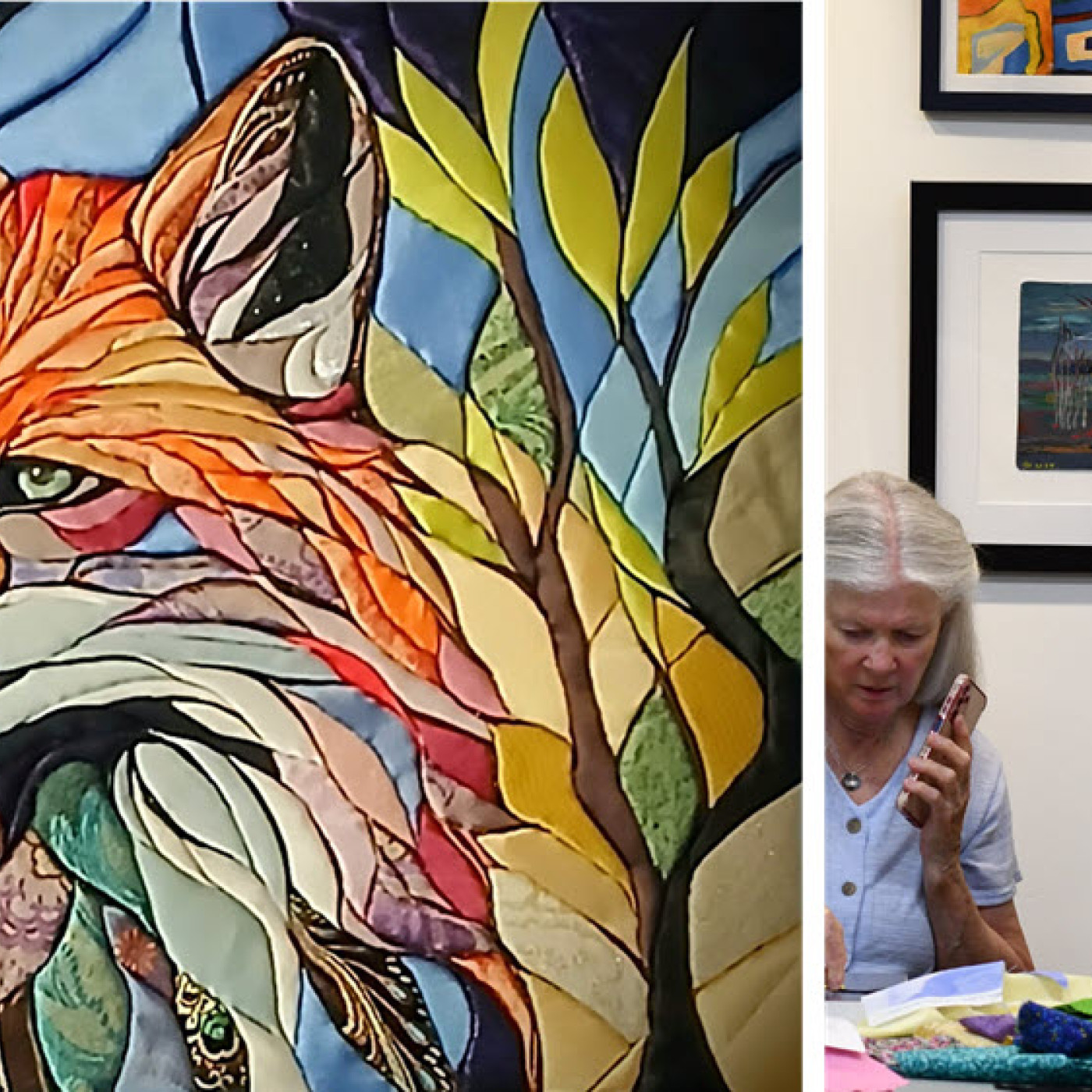
Jenni Barry felt called to northern Idaho when she moved there with her two children in 2008, and she planned to paint after they settled into their new home.
“I tried to paint but wasn’t very inspired. I thought if I built a studio, I would get inspired. The studio was an inspiration, but not in the way I expected,” she said. “It had lovely open rafters and ugly exposed foam core insulation.”
As Jenni wondered how she was going to cover that foam board, she saw a ball ornament on her Christmas tree. Jenni had made it when she was in elementary school and knew it was a Japanese technique.
She did not yet know what the technique was called. But that was about to change.
Jenni thought to herself, “This is just fabric tucked into Styrofoam. I can do that to the whole ceiling.” And so, she did.
“The fabric I used on the ceiling was a combination of fabric from my mother’s sewing room and my children’s outgrown clothes,” Jenni said. “My daughter was more than willing to donate skirts and blouses to the cause — even a tiara.”
However, Jenni needed to be more careful with her son. “I used some fabric from the trimmings of a pair of blue camouflage pants he made into cutoffs. He got home from preschool and totally freaked out, accusing me of using his favorite cutoffs,” she said. “He forgave me when he found them in his dresser. I also used his Batman shirt, but I got him one without holes before doing so.”
The Japanese technique Jenni came across via her Christmas ornament is Kimekomi. It involves tucking fabric into grooves to make patterns.
Originating in the middle of the 18th century, it is believed to have been created by a carving artist who served at the Kamigamo Shrine in Kyoto, Japan. The resident artist made dolls from willow bark and wheat paste, cut grooves into them, and tucked pieces of fabric from recycled kimono robes into them — giving them a quilted appearance.
A Kimekomi artist since 2010, Jenni has been teaching her version of the medium since 2015. “I create two-dimensional, fabric wall art that combines the painterly quality of impressionist painting and the warmth of complex quilting,” she said.
Jenni said her mission is to bring this technique into the modern art consciousness. She said the art she created on her ceiling is still there “as a constant reminder of how much I've grown.”
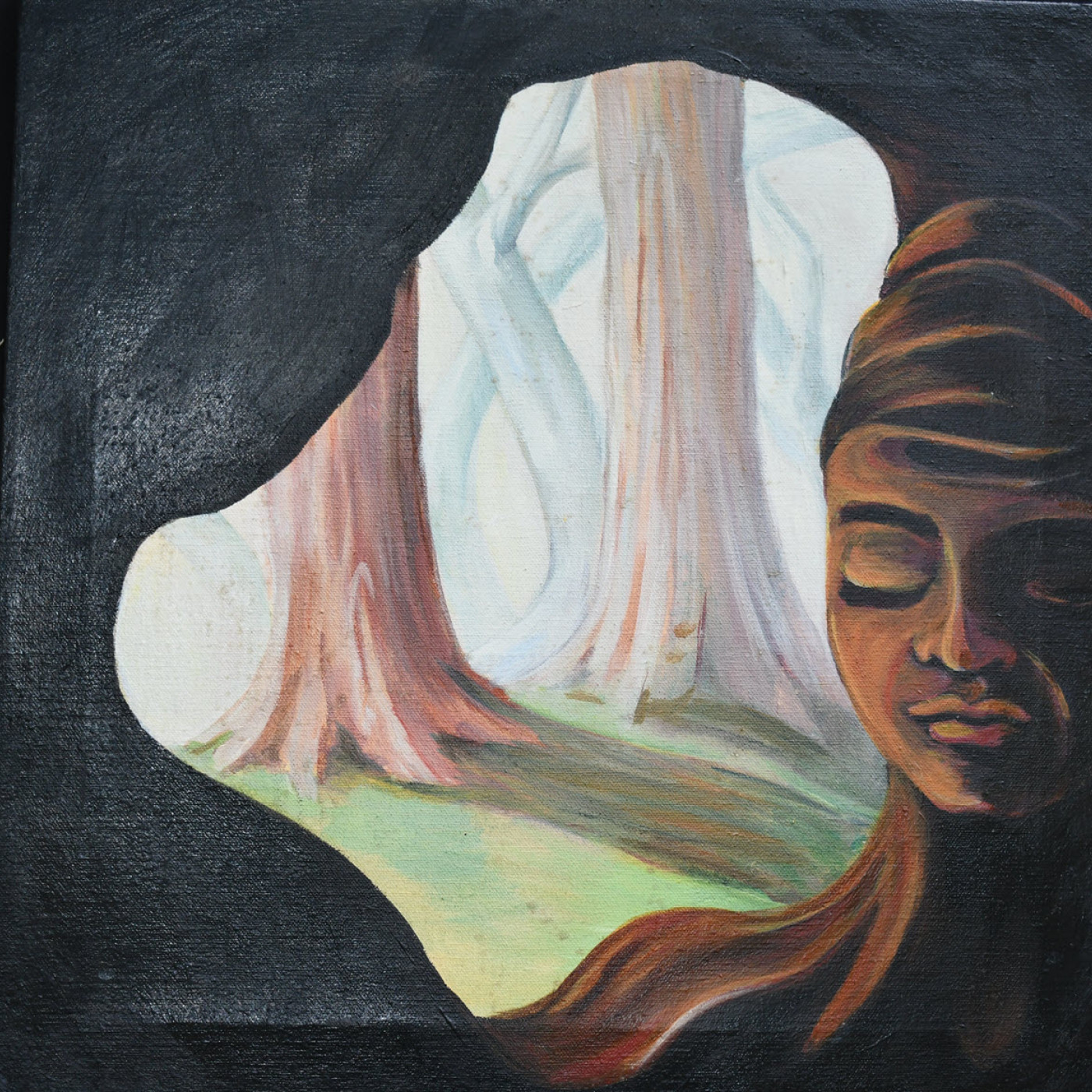
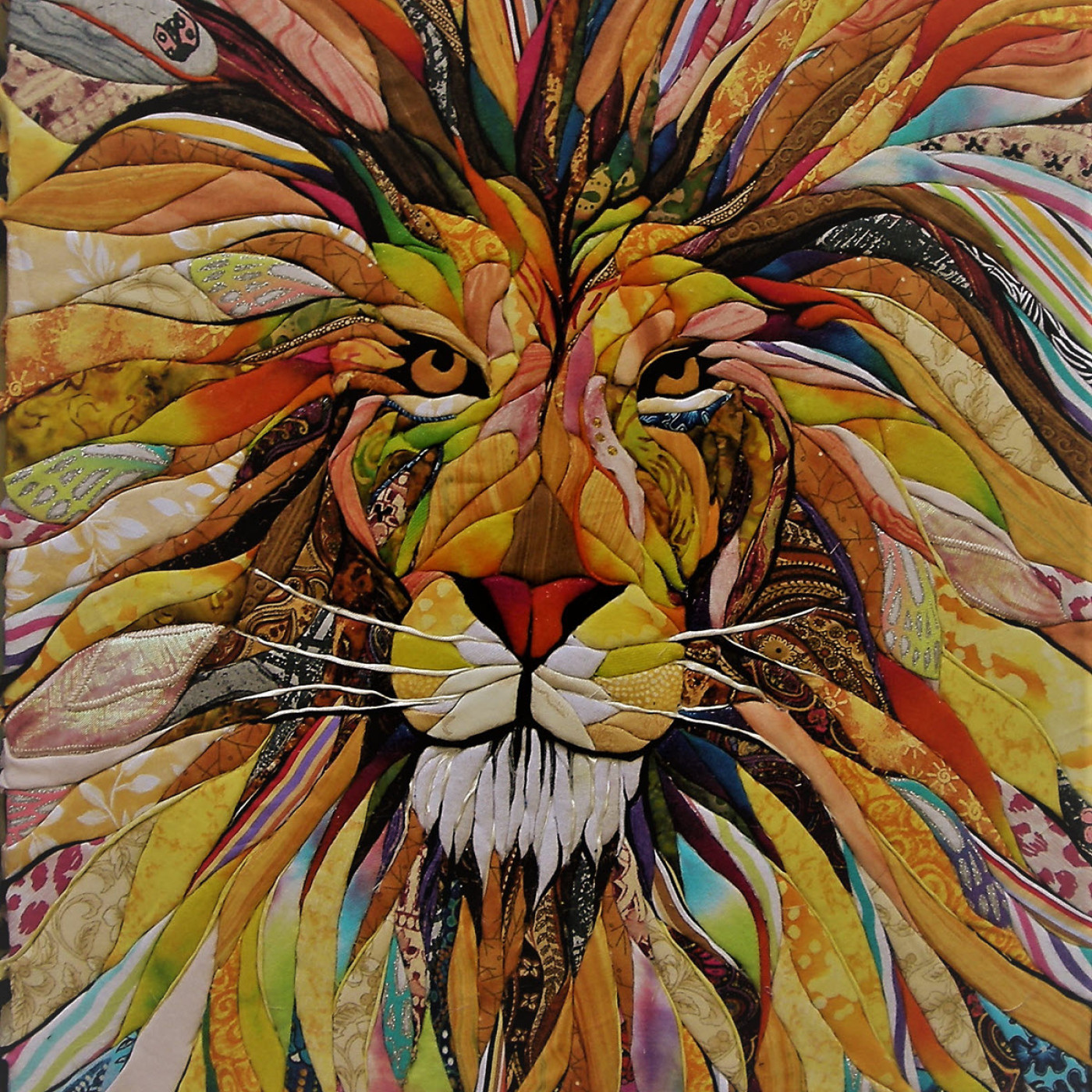
Her Artistic Journey
Jenni lived in California’s South Bay area until she was 15. “My parents had a ranch in a remote, little town near the coast in Humboldt County, where I spent a lot of time,” she said.
At age 14, she suffered a massive head injury and was homeschooled for a year and a half. “I spent a lot of time at my parents’ property in Humboldt. Kids who live in that town usually board with a family — in the town with the school — when they go to high school,” Jenni explained.
Jeanette Ford graciously opened her home to Jenni. “She was an oil painter of landscapes, still-lifes, and beautiful florals. She and I spent a month of the school year traveling Europe, visiting museums, galleries, churches, and other historical places,” Jenni said of the late artist. “Jeanette really exposed me to a lot of art styles and mediums and tried to influence me to relax and express myself more freely. I was interested in being a painter at that point and was learning technique. I had no distinct style.”
In addition to Ford, Jenni was mentored by Hobart Brown. She described the late artist as eccentric and said he had an awesome gallery in the middle of town.
“He was the creator of the Kinetic Sculpture Races,” Jenni said. “He taught me that art could take any form and to create something unexpected in my own art.”
Jenni continued studying art and graduated from Sierra Nevada College in 1995 with a Bachelor of Fine Art and a concentration in painting. She planned to move to Sandpoint, Idaho.
“I was going to go to galleries and museums with my portfolio full of slides depicting the work I had completed, in the hopes of being featured,” she said. “My mother’s health was failing, so I stayed in the Sierras to be relatively close to her.”
Her mother died within a year. In addition, during that same year, Jenni discovered that museums and galleries had advanced technologically and used digital files exclusively to assess new artists.
“My paintings had been moody and dark before my mother died. I struggled to paint at all after my parents died (her father passed the year after her mother). I moved from the Sierras to the Santa Cruz Mountains to be closer to my brothers and sisters,” Jenni said.
She says “The Hobbit Tree” is the painting that best expressed the grief she was experiencing. “I was coping and seemingly happy on the outside and inconsolable on the inside. I worked for Big Basin Redwoods State Park, and those trees were my best counselors,” Jenni said. “I injured my back and became a baker for a while. I had two home births, then moved back to the little town where my parents had their ranch. My art was the rock wall I built and everything I made for my children (furniture, costumes, and cakes).”
After a few years, Jenni decided to move her family to Sandpoint — the place in Idaho she originally wanted to move to after college. It took her almost a year to cover the foam in her exposed ceiling, with images emerging. It was the only art Jenni worked on for the year.
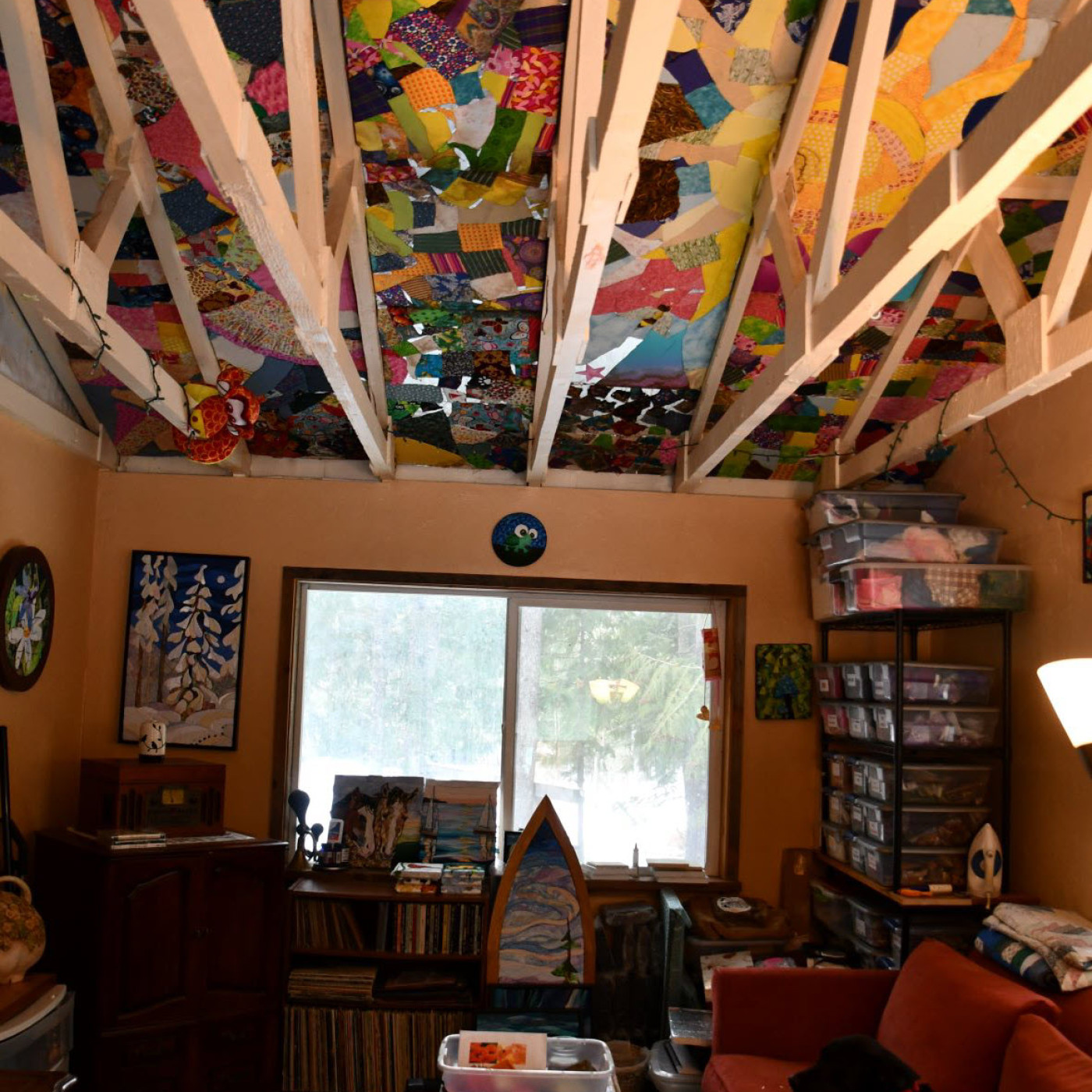
When Jenni was invited to the Pend Oreille Arts Council’s Cabin Fever show in 2011, she adapted her new art skills to produce a piece for the art show. Designed as a ceiling truss, “Seasons” is a scene of a continuous landscape of the four seasons.
Her art has grown and evolved since then. “My work has become much more complex, and I love using a variety of textured and patterned fabrics to create more detail,” she said.
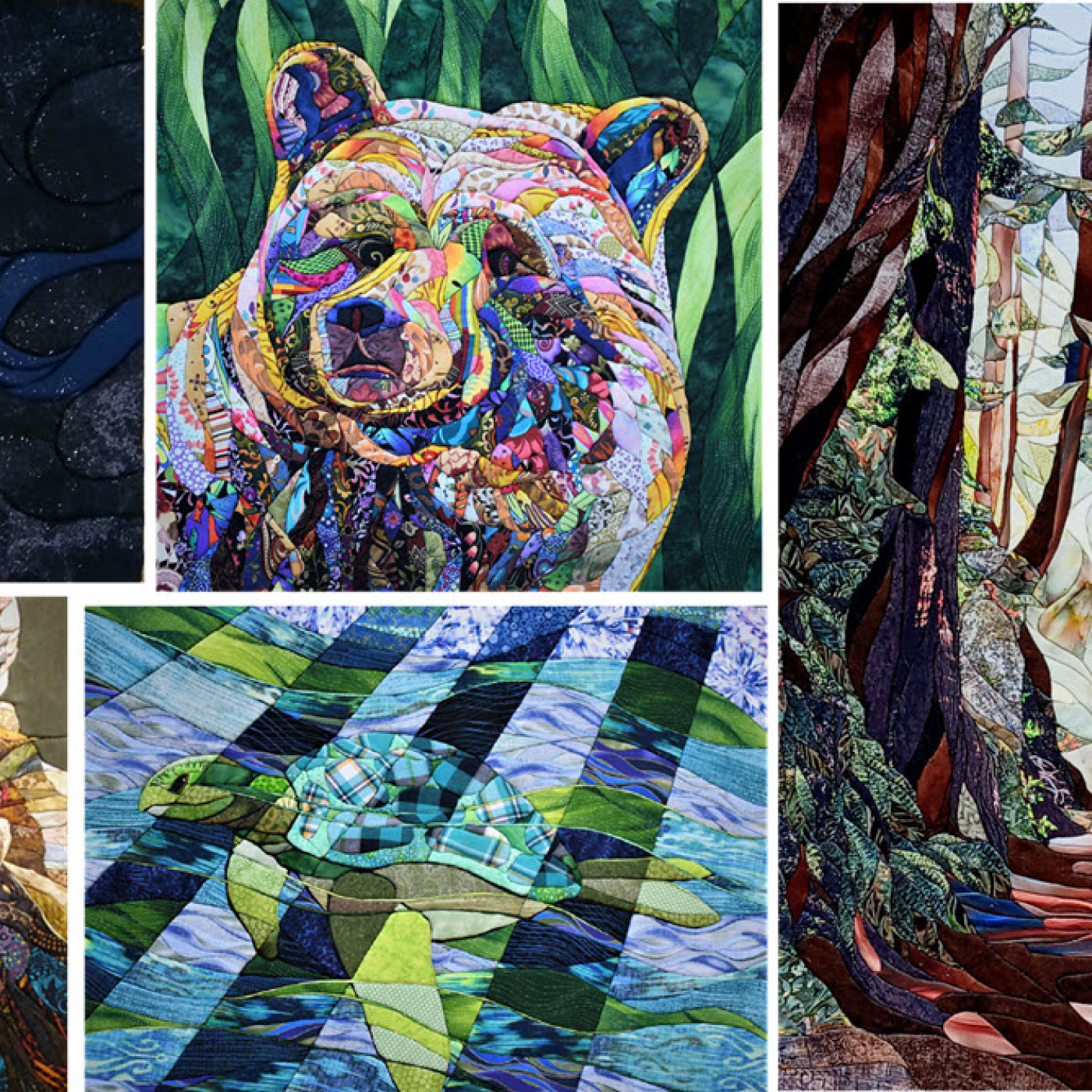
Jenni participates in a variety of shows and exhibits nationwide. “I love sharing the wonderful textural nature of Kimekomi live. People really gain a better understanding of my art when they see it in person,” she said. “Many want to learn how to do it, and many more want to buy my art once they understand the history and the process of this medium that is new to most of them.”
She prefers to be in festivals that do not allow prints or reproductions. “I only create originals. But if an artist makes a lot of prints of multiple sizes, that opens up a lot of festivals,” Jenni said. “Also, shade is a must for me. But for glass artists, sun is essential. l also look for festivals with many years of reputation. They tend to have a regular clientele.”
Jenni teaches Kimekomi as well. “People just started asking me if I would teach them how to do it. I have been teaching classes at art guilds near me like Pend Oreille Arts Council in Sandpoint or Create in Newport,” she said. “I have been totaling three or four classes a month, and each class takes four hours and is about five to 10 people per class. My plan, however, is to have about four months per year (one per season) that I focus on the teaching aspect of my business, leaving me a little more studio time.”
She has had her website — www.JenniBarryArt.com — for eight years and said it has been a great tool for both gallery and portfolio purposes. “Once people see what can be done, many want something specific created,” Jenni said. “I have been doing custom work for seven years.”
One of Jenni’s favorite custom pieces that she created is “Sierra’s Lion.” She said, “Sierra was 12 when she drew a beautiful lion. I told her father that she inspired me to make a lion. He said if I made a lion, he’d buy it. I told him that I could do HER lion. I copied her lion, line for line. Her father brought me some of her clothing she had outgrown to use in the piece. ‘Sierra’s Lion’ is framed alongside the penciled original and has become a valuable heirloom for their family.”
The challenges Jenni faces as an artist have changed. When she was a painter, it was about what to create. “I could rarely get a piece to turn out like it was in my head,” she said.
As a Kimekomi artist, she is constantly filled with new ideas and inspiration. “I view the entire world as a medley of little pieces of fabric,” Jenni said. “The challenges I face as a Kimekomi artist are finding venues to show my Kimekomi art in person and to educate people about this medium and all of its possibilities.”
Her advice to artists just starting out is to be open to whatever medium chooses them. She believes finding diversified methods of income involves “listening to what comes to you and being adaptable if something isn't working or making you happy.”
She said one way for an artist to grow and expand their business is to be fearless. Someone once told her to do the tasks she dreads the most — first.
Jenni discovered the art medium that is right for her. “I am inspired by the union of fabrics from around the world to create complex beautiful images,” she said. “I love the quiet, meditative nature of the Kimekomi process.”
